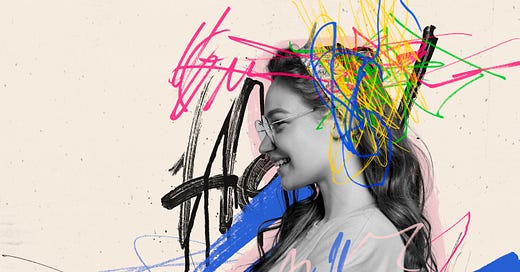Emily Chang hosts a Bloomberg Originals video series called The Circuit. Her latest episode, Microsoft: The Tech Giant's 50 Years, explores the company's history through the eyes of its past and present leaders. The second half of the video is where she explores Microsoft's AI future with Bill Gates, Satya Nadella, Mustafa Suleyman, and others. In an interesting exchange, Emily asks Bill, "What's going to be the it job of the future?" Bill responds by saying that there probably won't be any specific job that holds that title. Instead, he highlights the continuing importance of human capabilities. [38:30]
This video is technical journalism at its best. It’s thoughtful, insightful, and it contextualizes AI within the broader sweep of Microsoft’s history. Even so, the angst is palpable. What does the future hold when AI writes code, passes tests, drafts entire articles, and generates art? Will there be anything left for humans to do? Pundits assume a variety of perspectives. A few are utopian, others more measured, and some are apocalyptic.
This isn’t the first time humans have faced off against the machine. During the Industrial Revolution, automation not only made workers more efficient, but it replaced many of them as well. The legend of John Henry captures the fears of so many at that time. As the story goes, John Henry was a big steel-driving man, a railroad employee who made a living by driving steel drills into rocks. Others then filled the holes with explosives, blasting tunnels through America’s mountains. As steam-powered drills appeared in the late 1880s, John Henry took a stand against the machine, challenging it to a steel-driving competition. With two hammers in his hands, he beat the steam-powered devil but died shortly thereafter of exhaustion.
The story of John Henry might be a myth, but the exhaustion feels real. Everyone, it seems, has something important to say about AI. Trying to keep up with it all can become a full-time job. Inevitably, fatigue sets in. When that happens, it’s time to take a deep breath, step back, and reassess the landscape with fresh eyes. Let’s start by sketching out an argument, a line of thought to focus our thinking. Here it is as a numbered list:
AI will automate away most of today’s routine, white-collar tasks.
With much of the routine work done by AI, creativity – the ability to make interesting and valuable connections – will become the it skill of our time.
This shift in marketable skills will call for us to reconsider the question of what it means to be human. What are the distinctive features of creative thinking and how will those shape the way humans adapt to generative AI?
Humanists have studied the nature of creative human thought for millenia, and they do so from a nuanced and multifaceted perspective. The concepts they articulated will become even more valuable as AI advances.
The ideas referenced above are not just philosophical but practical too. That is, a proper understanding of them allows one to focus on what really matters in an increasingly chaotic world. Ordinary people, business leaders, and policymakers will all benefit from this wisdom.
Proposition #4 lies at the heart of this argument. I have identified at least five attributes of creative thinking that set it apart from its AI rival. Broadly speaking, scholars working in the humanities should find much here that resonates with their understanding and experience, though they and you (my readers) may wish to add to or modify those attributes. I will present that list in my next post. But if you have any thoughts about the argument as it currently stands, feel free to leave a comment.
I look forward to hearing from you!




